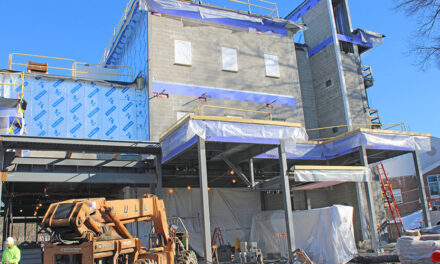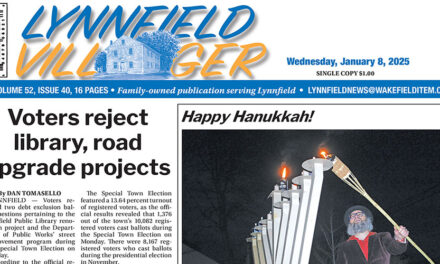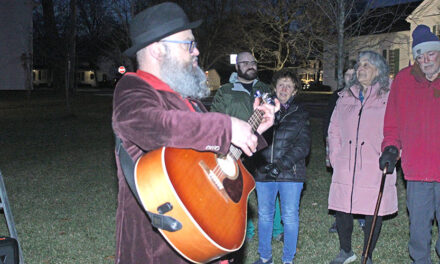By DAN TOMASELLO
LYNNFIELD — A vote on the elementary school additions project is tentatively being eyed for October Town Meeting and at the ballot box later in the fall.
The School Building Study Committee (SBSC) recently held its second meeting to discuss the project. The Board of Selectmen formed the SBSC in early March after the School Enrollment Capacity and Exploration Committee (SECEC) determined both elementary schools were running at capacity due to increasing enrollment.
“We are running at historical rates,” said SBSC Chairman John Scenna.
Superintendent Jane Tremblay said the elementary schools’ enrollment projections have not changed since the start of the COVID-19 virus pandemic. She said both elementary schools will be running five kindergarten classes next year.
“I can’t stress enough that both of our elementary schools will be at 100 percent capacity during the 2020-2021 school year,” said Tremblay.
Town Administrator Rob Dolan recalled that the town hired Tappé Architects in order to study the two elementary schools’ capacity. He said the firm is anticipating the project will cost between $12 million and $16 million.
“This is the most difficult cost estimate to make considering where the world is right now,” said Dolan.
Dolan recalled that the Annual Town Meeting approved allocating funds for additional architectural services, which includes undertaking a geological survey at Huckleberry Hill School.
“There are questions about what is underground at that school,” said Dolan. “Whatever is underground will affect the cost.”
Dolan said October Town Meeting will need to approve the elementary school additions project by a two-thirds vote. He also said voters will need to approve a Proposition 2 1/2 debt exclusion at the ballot box in order for the project to move forward.
Incoming Superintendent Kristen Vogel reviewed the project while she was going through the interview process. She also said Tremblay brought her “up to speed” during the transition.
“I know what we are looking at for the next couple of years,” said Vogel. “Jane, I and the School Committee are on the same page in terms of what is optimal for class size for teaching and learning, and the success of our students. It’s important to have additional classroom space in order to make that happen.”
SBSC member Jamie Hayman, who is also the School Committee’s chairman, said the elementary schools’ enrollment spike is still an issue despite schools being closed since mid-March due to the pandemic.
“We are still facing the same enrollment needs as we were when we started this conversation,” said Hayman. “I think there are a lot unknowns about what school is going to look like in the fall, and that can be a distraction. But from a long-term education standpoint, we are going to be coming up against our numbers and we are going to be overcrowded.”
Hayman noted school officials have discussed developing a “bridge plan” as an interim solution. He said, “Redistricting doesn’t help us because we are running at capacity at both schools.” Hayman said implementing larger class sizes has “always been non-negotiable for this town.”
“That comes down to art-on-a-cart and music-on-a-cart to free up those rooms,” said Hayman. “I think parents would accept that as a bridge plan knowing it was for one or two years while we solve this problem on a broader scale.”
Tremblay said going to art-on-a-cart and music-on-a-cart models can work on a temporary basis, but are not long-term solutions because both programs would be “watered down.”
“In art, students would be confined to using watercolors, pencils and colored pencils, and students would not be able to do some of the bigger projects the art room can handle,” said Tremblay. “In music, it would put an end to students using instruments because you can’t be playing recorders while a math lesson is being taught in another room. The walls are not that thick and it would disrupt students.”
Tremblay noted the art and music rooms at each school were designed for both content areas.
“While this can get us through one year, it’s not something that Kristen and I would ever put on the table as a permanent solution because it would change the integrity of our art and music programs,” said Tremblay. “And for many of our students, art and music is where they find their success. We could use it for a year for sure, but longer than that would be a disservice to our students.”
Tremblay noted the enrollment spike at the elementary schools “is going to have an impact on the budget.”
“We are going to have more sections,” said Tremblay. “If we don’t do the additions, what becomes very tricky is where do you put those sections because you are not going to put 35 kids in a classroom. The numbers are telling us we are going to have five sections in each grade level. If we don’t do the additions, Lynnfield Public Schools will forever be changed and probably not for the better.”
Hayman said it’s important for local officials to raise awareness about the project to residents, particularly young parents.
“Our attitude is let’s get this pushed through as soon as possible,” said Hayman. “We are ready to lead the charge.”
Board of Selectmen Chairman Chris Barrett, who recently replaced Selectman Phil Crawford on the SBSC, agreed.
“Time is of the essence,” said Barrett. “With October Town Meeting approaching quickly, its important for us to make a decision and hit the ground running. The time we have before October Town Meeting is short and we are going to have to use this summer in order to educate the community.”
The SBSC will continue discussing the project on Wednesday, Aug. 26.
“I think by then we will have a clear definition of where we are headed and what the goal is going to be,” said Scenna. “By September, this group will have a defined project with an estimate. The Board of Selectmen will discuss, deliberate and vote to put that on the warrant for Town Meeting. If it passes by a two-thirds vote, it will go to an election. If it passes the election, we will give Tappé a notice to proceed.”





